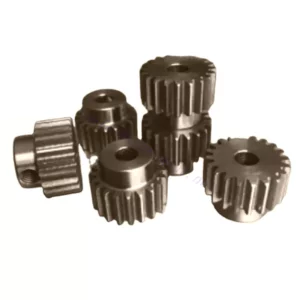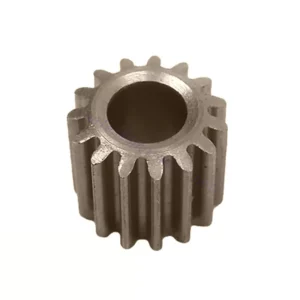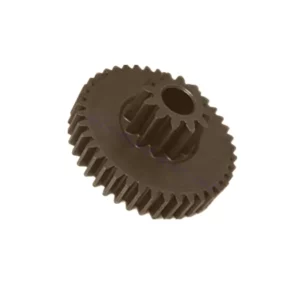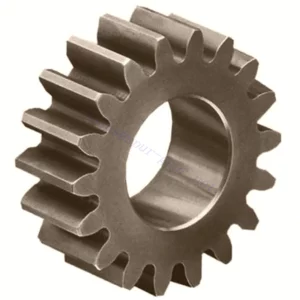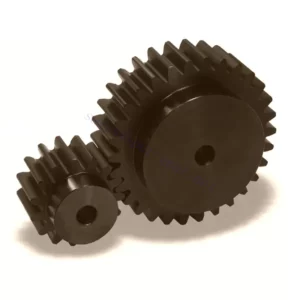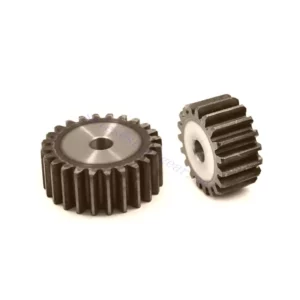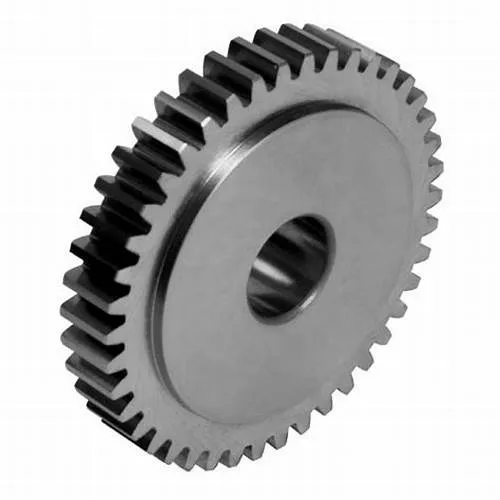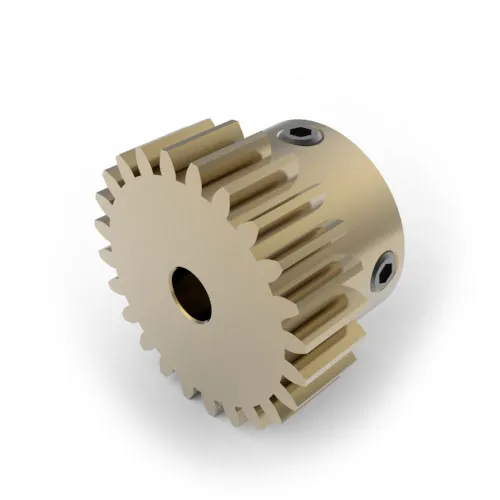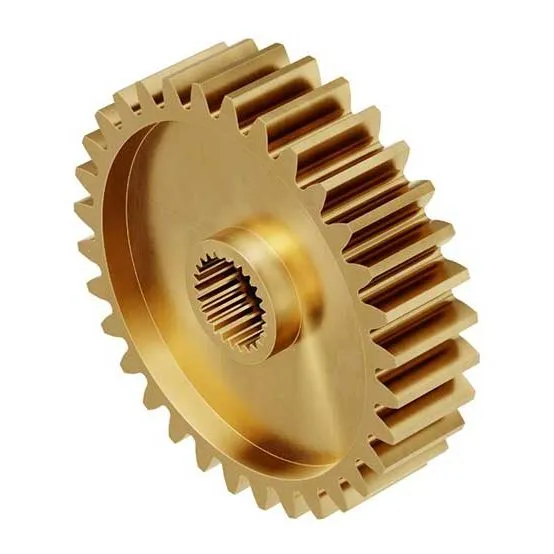HIGH QUALITY
SPUR
GEAR
Spur gears are one of the most popular types of precision cylindrical gears. These gears feature a simple design of straight, parallel teeth positioned around the circumference of a cylinder body with a central bore that fits over a shaft.
spur gear advantages
Spur gears are a cylindrical shaped toothed component used in industrial equipment to transfer mechanical motion as well as control speed,power and torque.
Simplicity
Simple,compact design that makes them easy to design and install,even in limited or restricted spaces.
Constant speed drive
These gears increase or decrease shaft speed with a high degree of precision at a constant velocity.
Reliablity
Spur gears are unlikely to slip during operation and their durability decreases their risk of premature failure.
Cost-effectiveness
The simplicity of their design allows for greater manufacturability,making them less expensive to fabricate and purchase.
Efficiency
Spur gear systems have power transmission efficiencies between 95% and 99% and can transfer large amounts of power across multiple gears with minimal power loss.
Different Types Of Spur Gears
There are many types of spur gears available for a variety of applications. The gears can be made of a variety of materials, including metals, plastics and other components. They also come in different sizes and shapes to meet the needs of specific applications.
Steel Spur Gears/Bronze Spur Gears
Steel is the most popular material for making spur gears because it has a high strength-to-weight ratio, as well as low cost. It is also resistant to corrosion and easy to work with. Other metals commonly used to make spur gears include aluminum and bronze.
Stainless Spur Gears
Stainless steel is another popular metal used in the production of spur gears. It comes in a variety of grades and properties, most containing at least 11% chromium. It is also machinable and can be hardened by heat treatment or cold working.
Aluminium Spur Gears
These alloys are more expensive than steel, but they have better corrosion resistance and are easier to work with. They are also lighter than steel, making them ideal for applications requiring a high strength-to-weight ratio
How To Measure Spur Gears
First, you need to know whether the gear you’re measuring is internal or external. The teeth of an inner gear are cut on its rounded inner surface, while the teeth of an outer gear are cut on the outside.
Next, you need to know the dimensions of the cylinders that make up the gears. This size is determined by a number of parameters, including the center of rotation, gear shaft, pitch radius and pressure Angle.
You also need to know the size of the edge and diameter of the gear. These measurements will be used to determine the number and thickness of the teeth. Finally, you need to know the distance between the large and small diameters of each tooth. These values can be tricky to calculate, but they are crucial to ensure that spur gears are accurately sized.
what are spur gears?
In many variants, the gear is machined with a hub which thickens the gear body around the bore without changing the gear face. The central bore can also be broached as to allow the spur gear to fit onto a spline or keyed shaft.
Product
Customer
year
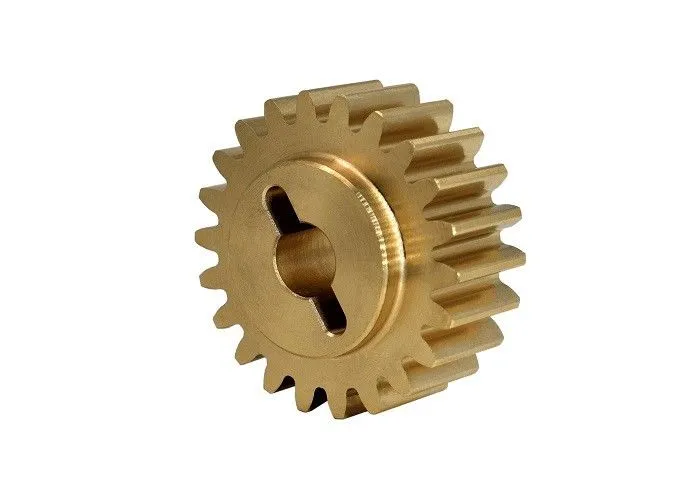
Important Spur Gear Definitions AND
Terms
The design and construction of a spur gear significantly influence its performance. To do their jobs effectively and efficiently, they need to be fabricated from high-quality materials and to precise dimensions. The dimensional measurements of each feature are integral to how a specific gear functions.
As such, when an industry professional requires a new spur gear design or a replacement spur gear, it is imperative that they are familiar with the terms for each gear part and their respective measurements to ensure clarity and accuracy in the production or purchase order.
hot stainless steel spur gears for sale
We are your best choice to buy spur gears online, if you need please contact us.
Our Stainless StEEL Spur gear
Spur gears are used in mechanical applications to increase or decrease the speed of a device or multiply torque by transmitting motion and power from one shaft to another through a series of mated gears.
Meshing Spur Gears
Meshing spur gears can be a complex task, especially when there is a deviated tooth profile. These deviations can be caused by unnecessary manufacturing errors, or they can occur during the operation of the gear.
For spur gears, the common meshing method is to use a rack and pinion system. This method converts the rotating motion of the pinion to the linear motion of the rack and allows the pinion pairs to be connected to each other without the need for expensive mechanical links or gearboxes.
There are many benefits to using this type of design. Most important is the ability to produce a very compact gear assembly.
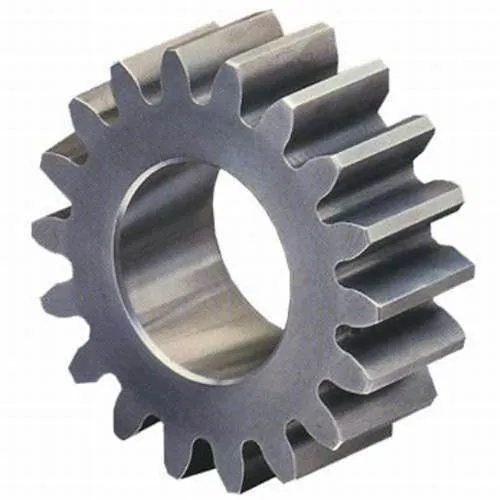
Standard Spur Gears/Stock Spur Gears
Our facility is equipped to produce standard spur gears with the following characteristics:
- Cold rolled aluminum or carbon steel construction materials with high-quality surface finishes
- AGMA 6-8 quality
- 5° or 20° pressure angles
- Diametral pitches of 6–48 teeth per inch
- Modules of 0.6–4 millimeter per teeth
- Outside diameters of up to 6 inches
- Branding – 90%
- UX Research – 77%
- Interface Design – 85%
Metric SPUR gEAR
Metric terms and formulas: pitch, modulus, supplement, root, and full depth
To understand the metric dimensions of gears, you must first become familiar with the pitch and module indicators. This is because they represent the size and spacing of the gear teeth.
What Are Spur Gears Used For
Spur gears are used to transfer motion and power from one shaft to another in a mechanical setup. This transference can alter machinery’s operating speed, multiply torque, and allow for the fine-tuned control of positioning systems. Their design makes them suitable for lower speed operations or operational environments with a higher noise tolerance.
Some of the typical industrial applications include:
- Transmissions
- Conveyor systems
- Speed reducers
- Engines and mechanical transportation systems
- Gear pumps and motors
- Machining tools
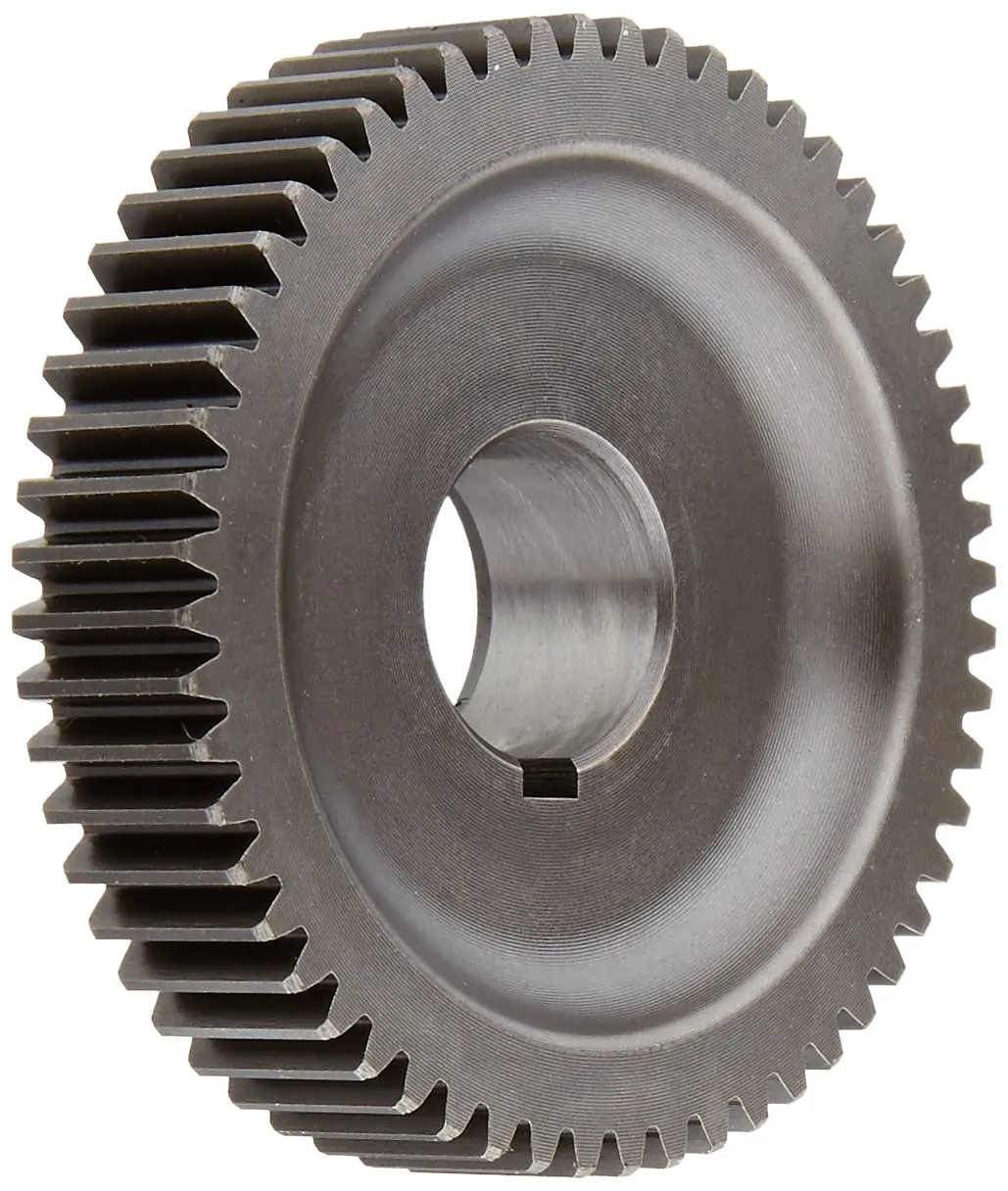
Helical Gears Vs Spur Gears
Helical gears have teeth that are set at an Angle to the gear shaft. Since tooth contact is more gradual, they have a smoother and quieter operation than spur gears. Helical gears also have greater tooth strength and higher load carrying capacity.
In addition, helical gears can transfer power between parallel or non-parallel axes, while spur gears can only transfer power between parallel axes. One disadvantage of helical gears is the axial thrust they produce, which needs to be considered; Things you don’t need for cylindrical gears.
WHY CHOOSE US?
WHY CHOOSE US?
We are one of the best steel spur gears manufacturers.We can offer a wide variety of metal spur gear sizes.We also can provide stainless steel spur gear and metal spur gear.We have exported our products to clients around the world and earned a good reputation because of our superior product quality and after-sales service.We warmly welcome customers both at home and abroad to contact us to negotiate business, exchange information and cooperate with us!
